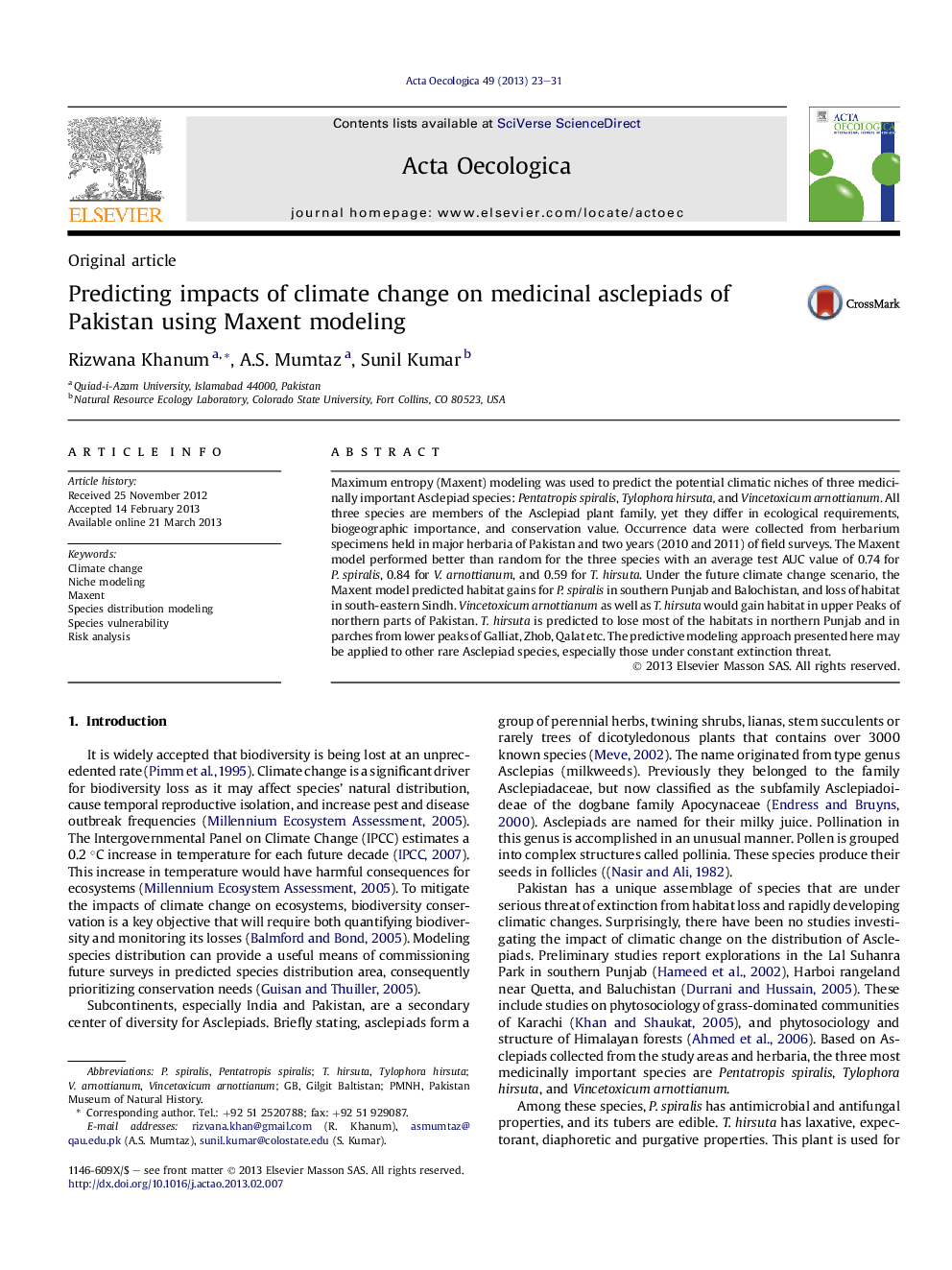| Article ID | Journal | Published Year | Pages | File Type |
|---|---|---|---|---|
| 6297367 | Acta Oecologica | 2013 | 9 Pages |
Abstract
Maximum entropy (Maxent) modeling was used to predict the potential climatic niches of three medicinally important Asclepiad species: Pentatropis spiralis, Tylophora hirsuta, and Vincetoxicum arnottianum. All three species are members of the Asclepiad plant family, yet they differ in ecological requirements, biogeographic importance, and conservation value. Occurrence data were collected from herbarium specimens held in major herbaria of Pakistan and two years (2010 and 2011) of field surveys. The Maxent model performed better than random for the three species with an average test AUC value of 0.74 for P. spiralis, 0.84 for V. arnottianum, and 0.59 for T. hirsuta. Under the future climate change scenario, the Maxent model predicted habitat gains for P. spiralis in southern Punjab and Balochistan, and loss of habitat in south-eastern Sindh. Vincetoxicum arnottianum as well as T. hirsuta would gain habitat in upper Peaks of northern parts of Pakistan. T. hirsuta is predicted to lose most of the habitats in northern Punjab and in parches from lower peaks of Galliat, Zhob, Qalat etc. The predictive modeling approach presented here may be applied to other rare Asclepiad species, especially those under constant extinction threat.
Keywords
Related Topics
Life Sciences
Agricultural and Biological Sciences
Ecology, Evolution, Behavior and Systematics
Authors
Rizwana Khanum, A.S. Mumtaz, Sunil Kumar,
